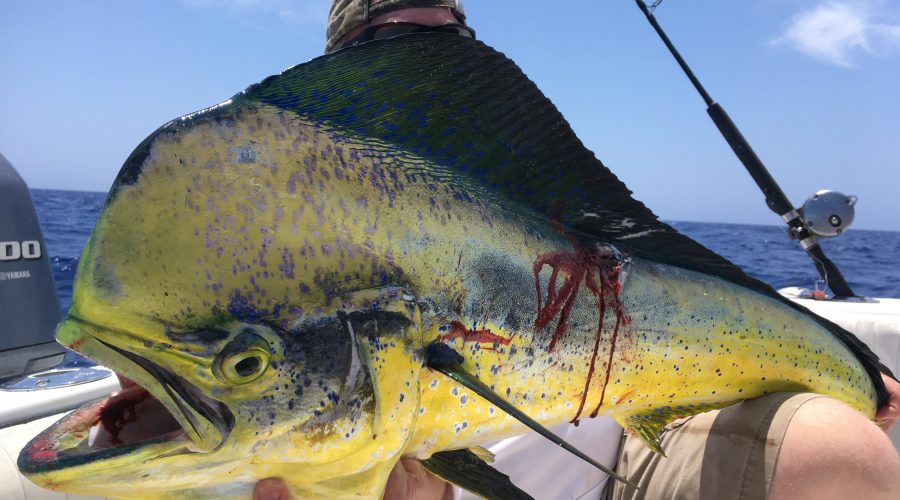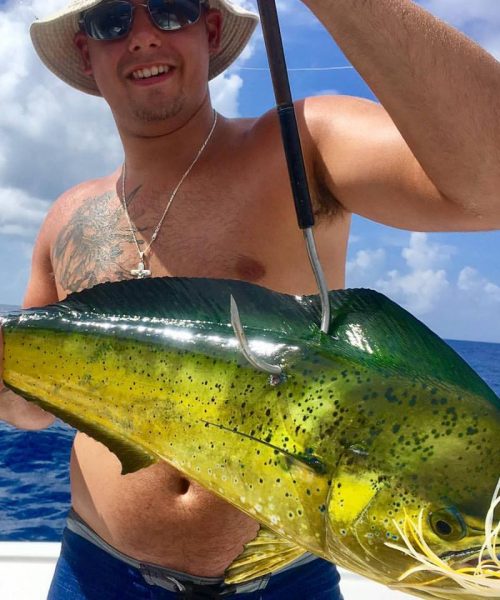Dolphin Fishing in Key West – Perfect For All Anglers

Their beauty, the smooth and shimmering colors of blue, yellow and green that brighten the backs and sides and the acrobatic aerial displays all combine to make the dolphin fish (otherwise known by its Hawaiian name Mahi-Mahi and not to be confused with the better known marine mammal of the same name) one of the most prized gamefish in the seas.
They also make delicious table fare. There are several local restaurants in Key West that will be happy to cook your dolphin fish for you. Just ask while out on the trip and I’ll be happy to provide a list of restaurants.
Dolphins strike the perfect balance between challenge and accessibility. They are the ideal fish for both experienced anglers and first timers or newcomers
Want to Catch Dolphin? Know Their Prey!
Dolphin start appearing around March and their numbers grow up until and through the summer months.
Dolphin are continuous eaters and the key to catching them is to know the feeding patterns of the bait fish they prey on.
We’ll be on the lookout for ocean weed, particularly sargasso weed (a type of floating grass) which often contain complete miniature ecosystems, including protection and food for bait fish which will, in turn, attract the dolphin. Floating debris, like wood, boards, bits of tree, buckets and rope, similarly provide a shelter and eating opportunities for bait fish.
How to find these weed lines and debris? Good question! The answer is in the skies. Frigates and some species of tern will be circling the area, also on the lookout for bait fish.
A good guide can deduce much from the number and behavior of the birds, including what type of gamefish are likely to be nearby. Generally, a large number of birds hovering above and making dives will indicate a big school of smallish dolphin forcing the bait fish to the surface. While a large school often means smaller individual fish, the sight of up to 200 dolphin swimming together is something to behold! On the other hand, fewer frigates means a potentially smaller school, often lead by a large dominant male.
Call (305) 731-5459 or email [email protected] to book your fishing trip!


The Catch
When one dolphin is hooked, other members of the school will flutter around, leading to lots of flurries, splashing and the chance of multiple catches.
Most dolphin will be in the 10-20 pound range but catches of up to 30 pound are not uncommon. Catches over 40 pound are rare.
If it’s size you appreciate then we will target the males, known as bull dolphins and are distinguishable by the prominent squared forehead as opposed to the rounder head shape of the female cow.
